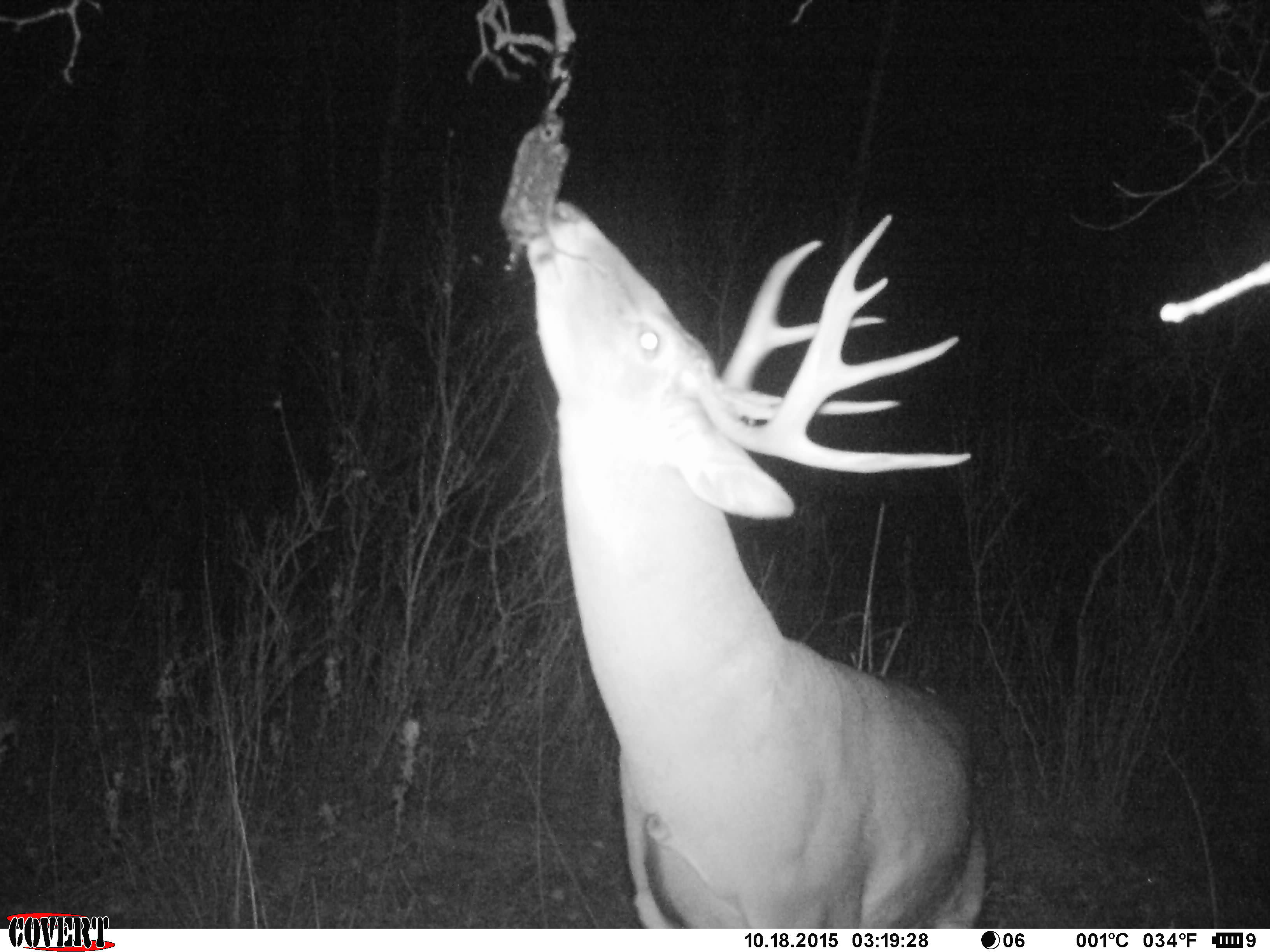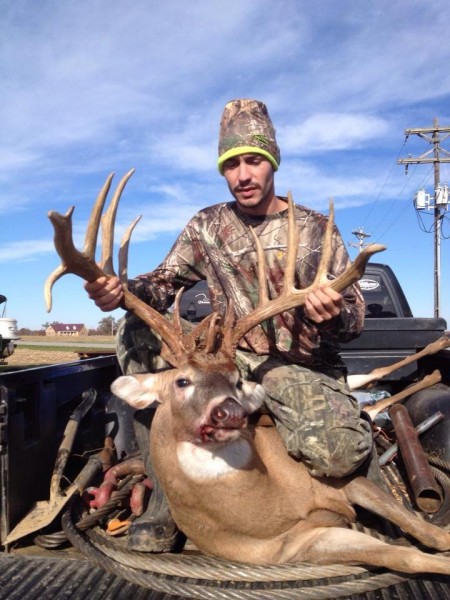6 Myths in Deer Hunting That Need to Die
Bernie Barringer 03.01.16

Hunting is largely generational so many concepts get passed on down through families. Most of this is solid hunting information that helps newcomers be more successful, but there are some myths that are passed along as well.
Scientific studies can take a small sampling and extrapolate a conclusion that is only accurate in the study area, or is missing just one important part that taints the results of the entire study. Good science can also prove a myth wrong.
Not all of the six myths that follow fall into these two categories, but in most cases, the myths have a small nugget of truth that just got twisted or misinterpreted. Here are six myths that need to go away once and for all.
1. You must cut a deer’s throat as soon as possible after it is shot.
I suppose this myth got started back in the day when blood was eliminated from the carcass of a hog or cow when it was butchered. The prevailing thought was that draining the blood would improve the quality of the meat. What naturally followed was that the best way to kill it was for it to bleed to death.
Arrow-killed deer and most bullet-killed deer die from blood loss. Any blood that isn’t lost as they die will drain when the animal is field dressed and hung. There is no need to slit the deer’s throat. It will just make your taxidermist angry.
2. How many times have you heard that bucks only travel into the wind?
This bit of hunting lore gets repeated so often that it is taken as Gospel by many hunters. If my area of Minnesota has four straight days of northwest wind for example, all our bucks would be in North Dakota. Sounds silly of course, but think about how a buck must spend its days. He has to eat every day and his trails simply do not allow him to put his nose into the wind and go.
It’s true that bucks prefer to quarter into the wind when it’s convenient to do so; they feel comfortable when doing so. But I have seen bucks readily travel with a tailwind, even enter their bedding cover with the wind at their back. I believe they travel confidently when they can see what’s ahead of them and smell what’s behind them.
Rarely do spooked bucks turn and run into the wind. They usually go back the way they came from or take a direct route to security cover. Buck travel into the wind when the conditions allow, at all other times, they move with the best possible advantage that gives them confidence.
3. Deer are colorblind and only see in black, white and shades of gray.
Most likely this prevailing myth comes from the realization that deer weren’t seeing hunters wearing blaze orange. When blaze orange laws became the norm a half-decade ago, hunters were surprised that the deer didn’t seem to pay any more attention to them than when they were wearing any other article of clothing.
Scientists have dissected the deer’s eye and analyzed the rods and cones to determine which colors deer can see. Turns out they see the blue end of the spectrum much better than humans do, but they can detect very little of the red end of the spectrum. They see blues and greens in brilliant display, in fact they can see ultraviolet colors that humans cannot see. Reds and oranges are subdued to the point that they may not be able to distinguish the colors from gray. So, if you head out into the woods in blue jeans and an orange coat, the deer will barely detect the orange, but the blue jeans will jump right out at them.
4. Bucks only check scrapes at night?
Several scientific studies have been published showing that bucks only check scrapes at night.
These studies involved putting trail cameras on scrapes and recording the times the bucks visited and worked the ground at the scrape and the overhanging branch that is present at nearly all scrapes. These results of these studies recorded that 80% or more, and in some studies, more than 90% of the visits were under the cover of darkness. This has led a lot of hunters to believe that hunting over scrapes has no value.
Each of these studies have one common flaw. The cameras were only placed on the scrapes themselves. Bucks often check these scrapes in the daytime, they just do it from 20-40 yards downwind. They move downwind of the scrape and take a whiff, then only approach it if they detect something that really get’s their attention.
Most primary scrapes are made on the edge of a field or opening, under and overhanging branch. Bucks simply are not willing to expose themselves to the open area during daylight unless there is something truly compelling in that scrape. Whenever possible they will simply check them from the nearest downwind cover and then move on. Now you have some information that will help you hunt scrapes much more effectively.
5. You must get into your stand before first light
My earliest bowhunting mentor was a neighbor named Jim, who took me bowhunting before I was old enough to drive. He loved to hunt mornings and he was adamant that we get in the stand at least an hour before first light, and 1 ½-2 hours was even better in his way of thinking. I remember him telling me that it gave time for our ground scent to dissipate and the activity of the other woods creatures to get back to normal.
It made all kinds of sense to me at the time, and I figured the fact that we spooked a lot of deer on the way in was simply a necessary trade-off. In fact, I loosely followed that rule for 30 years. But a few years ago, I started really analyzing that tactic and changing my morning strategy.
The problems with going in early are several, but the two biggies are the fact that you must use light, which alerts every deer around where you are, and the issue with all the noise that you make going in before daylight. It’s simply a whole lot quieter to approach your stand when you can see without a light.
These days, I more often wait until it’s just light enough to see, then move quickly and quietly into the stand. If I see a deer, I can stop and give it the right of way, which has helped me avoid getting snorted at and flagged at more times than I can count. If I have a long walk, I will often make the walk to within 100 yards of the stand in the dark, then wait until there’s just enough light to see before making the final approach.
The issue of ground scent is mostly overcome by using care in how I choose my entry and exit routes, and the woods doesn’t take an hour or more to get back to normal. I often have squirrels and birds moving about in normal patterns within five minutes of settling quietly into my treestand. Sorry Jim.
6. Bucks never leave home
Some GPS tracking studies have shown that some bucks are homebodies and spend most of their lives in a fairly small core area. Some bucks, they say, hardly ever leave an 80-acre “home range.” This is partly true, the science cannot be denied for the small number of deer that have been tracked, but there are three things that throw a monkey wrench into the equation.
First, bucks are individuals and have individual tendencies. Some are fighters, some shy away from a fight. Some are super cautious, some show risky behavior. Some are homebodies and some travel long distances. Similar to humans, they each have a “personality.”

Second, the studies may be true in some areas but there are such wide variances in terrain, food sources and habitat that bucks can afford to be homebodies only in the best habitat situations. If food, cover and water are nearby, a buck doesn’t have to travel a significant distance if he doesn’t feel like it. I have seen deer in Montana that come down off the hills and walk three miles to an irrigated alfalfa field to graze in the evening. In the morning, they may travel three miles in the opposite direction to bed in another area that day.
In Texas where the deer depend on corn feeders and waterers, bucks have been seen in a scouting camera photo at a feeder one day, and then at a feeder four miles away through the thick brush the following day.
Third, some bucks just leave. These movers may have 2-4 home ranges. I have interviewed dozens of hunters who have a pile of photos of a particular buck, then the buck just disappears for a month or more. In two cases, I did stories on large whitetails that were killed on a farm, only to discover that someone had photos of that buck on their farm seven miles away as the crow flies.
Myths are abundant in hunting, and some have a grain of truth but too much has been read into a small amount of information. One thing I love about whitetails is their unpredictability. Who knows which of the beliefs we hold about whitetail behavior right now might be disproven some day.
Follow Bernie’s bowhunting adventures on his blog, bowhuntingroad.com.

